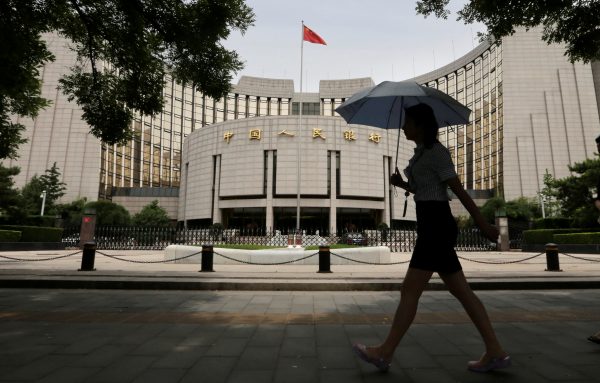It is therefore crucial to gain a better understanding of the causes of China’s economic slowdown.
What are the sources of this slowdown since 2010? From an international perspective, rapidly growing economies slow down when per capita incomes reach about US$17,000 by PPP — a level China is currently around. From a business cycle perspective, the Global Financial Crisis (GFC) could be responsible for accelerating the slowdown process. The cyclicality of Chinese growth dynamics suggests the possibility that the observed slowdown since 2010 could also be a temporary phenomenon connected with the downswing phase of this cycle.
Sources of business fluctuations in China, especially fluctuations in output therefore need to be better understood.
This requires an understanding of the rules governing China’s monetary policy. The People’s Bank of China (PBoC) is not an inflation-targeting central bank like many other modern central banks. Its objectives extend far beyond price stability, including promoting economic growth, supporting employment and achieving balance of payments equilibrium. And there is no consensus on the form of policy rules the PBoC has been employing, let alone whether such rules can achieve their objectives.
Evidence from a structural estimation approach suggests that the PBoC employed a hybrid monetary policy rule over the period 2001–17 — considering both a quantity component, money supply, and a price component, the consumer price inflation rate. Over this period, the PBoC conducted monetary policy by adjusting the policy rate according to the real money level, inflation rate, output level and output growth in the economy with different levels of importance assigned to each of these factors.
Both recently and during the GFC, policymakers have discussed the necessity of reforming monetary policy towards more price-based practices. But estimates using data over this period suggest that greater weight was attached to the quantity component of the monetary policy rule after rather than before 2009, indicating that the GFC had a measurable impact on how China’s monetary policy is implemented. Despite public speeches by policymakers about moving towards more price-based practices, the PBoC’s actual monetary policy rule still places more weight on the quantity movements of real money in the economy.
Given such a monetary policy environment, the main sources of business fluctuations in output and consumption growth rates were nationwide, neutral technology shocks and household consumption preference shocks, with exogenous demand shocks also of importance for output. In comparison, fluctuations in investment and loans were driven primarily by investment-specific technology shocks and net worth shocks.
Over 2001–2017, while consistently positive net worth shocks explain the steady growth of investment, negative nationwide neutral technology shocks have been the main contributor to the slowing of China’s GDP growth since 2010. The evidence suggests that there was a structural break in neutral technological development — from consistently positive over 2001–07 to consistently negative over 2010–17 — that has been the primary driver of the slowing of China’s GDP growth since 2010.
There was a drastic fall in output growth from about mid-2008 to early 2009 corresponding to the onset of the GFC. The sudden meltdown of the global financial system and then of the real economy may have affected technology and production through trade and financial channels. The current phase of the slowdown is arising from a structural change in the nation’s productivity, rather than a cyclical fluctuation, and policies that favour reform and industrial upgrading to address the change should be given higher priority at the leadership level.
After more than 30 years of high-speed economic development, the growth potential of technological advancement has shown clear signs of slowing. There is therefore a need to further liberalise the market to encourage technological innovation and industrial upgrading in China. The ‘new normal’ of the Chinese economy will be sustainable if future economic growth is supported by new and upgraded industries and technologies.
Jiao Wang is a Research Fellow at the Melbourne Institute: Applied Economic & Social Research at the University of Melbourne.
Ran Li is an Economist at the World Bank.
This article is abridged from Jiao Wang and Ran Li, ‘A structural investigation of the Chinese economy with a hybrid monetary policy rule’ in Ligang Song, Yixiao Zhou and Luke Hurst (eds.), The Chinese Economic Transformation: Views from Young Economists, China Update, ANU Press, 2019.

